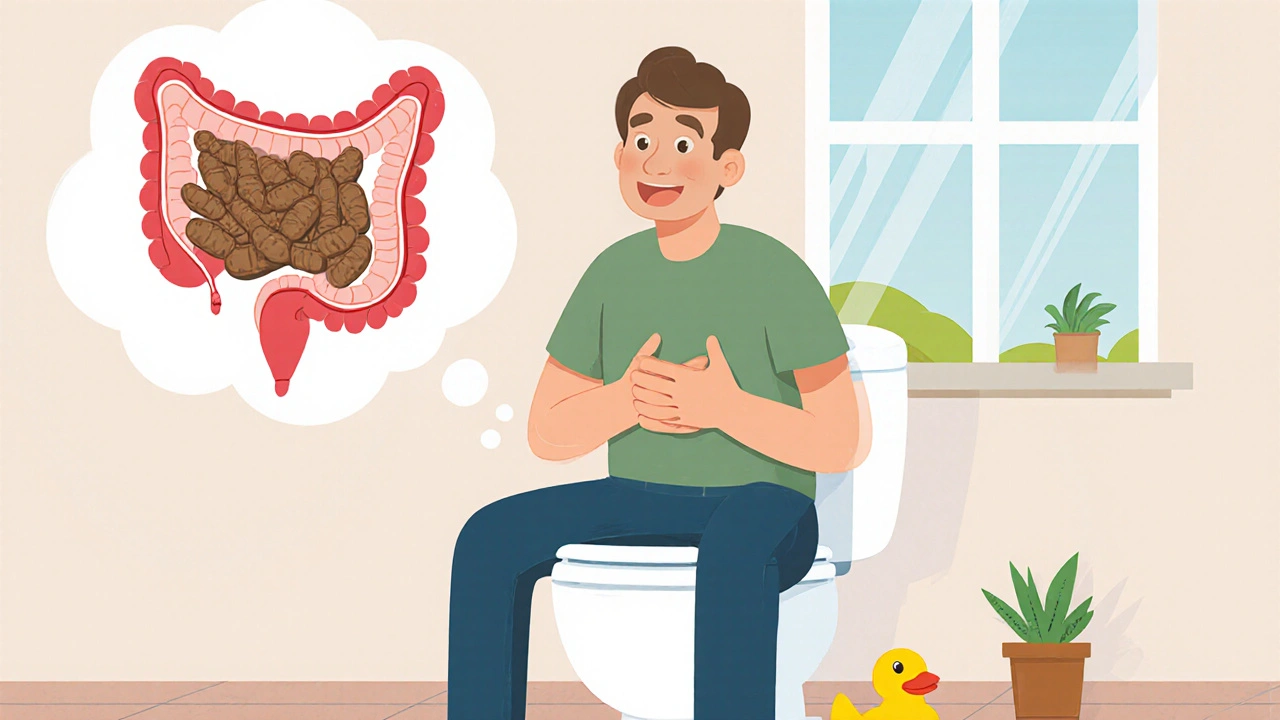Functional Constipation: What You Need to Know
When dealing with Functional Constipation, a common gastrointestinal condition marked by infrequent, hard, or difficult bowel movements without an identifiable organic cause. Also known as spastic colon, it often appears alongside other functional bowel disorders. If you're struggling with functional constipation, understanding the web of factors can make a real difference. One of the most direct contributors is dietary fiber, plant‑based carbohydrates that add bulk to stool and stimulate intestinal movement. Adequate fiber intake supplies the stool with the weight it needs to trigger peristalsis, the wave‑like motion that pushes contents through the colon. The condition also ties closely to gut motility, the speed and coordination of muscle contractions in the digestive tract. Reduced motility means stool lingers longer, water gets reabsorbed, and the result is harder, drier waste that’s tougher to pass. When natural measures fall short, many turn to laxatives, medications that either soften stool, increase water content, or stimulate colonic muscles. While effective in the short term, reliance on laxatives without addressing underlying habits can lead to dependence. Another piece of the puzzle is irritable bowel syndrome, a functional disorder that shares symptoms like abdominal pain and irregular bowel patterns. IBS and functional constipation often coexist, making diagnosis and treatment a balancing act. Understanding these relationships—how fiber influences motility, how laxatives modify stool consistency, and how IBS overlaps—helps you target the right strategy rather than relying on guesswork.
Key Factors and Treatment Paths
Functional constipation encompasses delayed colonic transit, meaning the stool moves slower than normal through the large intestine. Because of this delay, treatment requires a multi‑step approach. First, evaluating daily fiber intake gives a clear baseline; most guidelines suggest 25‑30 grams per day from fruits, vegetables, whole grains, and legumes. Second, reviewing hydration habits is crucial—water acts as the solvent that keeps fiber swollen and stool pliable. Third, a short course of osmotic laxatives such as polyethylene glycol can jump‑start the process, but clinicians usually recommend tapering off as dietary changes take hold. Fourth, lifestyle tweaks like regular physical activity and scheduled toilet times improve the colon’s natural rhythm. For those whose symptoms overlap with IBS, low‑FODMAP diets can reduce gas and bloating, indirectly easing constipation. Finally, if standard measures fail, prescription agents that target serotonin receptors (e.g., prucalopride) or chloride channel activators (e.g., lubiprostone) may be considered under medical supervision. Each of these steps reflects the semantic link that functional constipation requires adequate dietary fiber, that fiber influences gut motility, and that gut motility determines stool consistency. By aligning your plan with these connections, you avoid random trial‑and‑error and move straight toward relief.
The collection below brings together detailed drug comparisons, supplement reviews, and practical lifestyle guides that dive deeper into every element mentioned here. Whether you’re looking to compare over‑the‑counter laxatives, understand the role of fiber‑rich foods, or explore prescription options for resistant cases, the articles ahead break down the options in plain language and help you decide what works best for your situation.
Bisacodyl’s Role in Managing Functional Constipation - What You Need to Know
- Keith Ashcroft
- |
- |
- 10
Learn how bisacodyl works, proper dosing, side effects, and when it’s best for treating functional constipation.
View more
